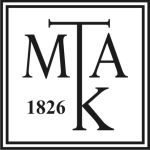Ausdeutung des mosaischen Rechts im 2. Jahrhundert
DOI:
https://doi.org/10.15170/Dike.2022.06.01.08Schlagworte:
law, covenant, justice, destructor legis, faith, gospel, salvationAbstract
The extremely heterogeneous, and in many cases even contradictory nature of the interpretation of the Law by the 2nd Century Church Fathers accurately reflects the doctrinal and dogmatic diversity of the Church of the time, a diversity that could also be called ‘polypoikilia’ elegantly in the language of the Epistle of Ephesus. However, apart from exceptional cases, this interpretive elegance is very far from the method and approach of the Christian auctors of the period. This could rather be called a kind of ‘theological furor’, which is fuelled by one common erudition: the theological anti-Judaism that can be detected even among Jewish-Christian converts. However, other common features can be found as well, the most important of which are the following: 1. The Greek equivalent of the Old Testament Torah, the term Nomos taken from the Septuagint, means radically different things even to diaspora Jews who do not know Hebrew than to the Church Fathers coming from various cultural traditions, especially to those whose mother tongue is not Greek, and this applies to their education and schooling as well. 2. Not only Jesus’ masals (parables) related to the law, but also the earliest interpretations of the most important passages of the Pauline epistles (Romans, Galatians) are permeated by the completely incorrect way of thinking, which is based on the juxtaposition of law and faith, law and gospel. 3. As a consequence of Markion and the exegetical war fought with the Alexandrian Gnostics in the 2nd century, the Nomos loses its pneumatic character, which was still emphasized by Paul, and at best sinks back to a psychic level. 4. The most essential part of the Old Testament Law (at least in Exile, the most essential part), the halachic mitzvahs and provisions, becomes completely unintelligible to the Christian world. The study traces the causes and natural history of the above contradictions in the extant works of some key authors – the Shepard of Hermas, the Epistle of Barnabas, Melito of Sardis, St. Justin and others.
Downloads
Veröffentlicht
Zitationsvorschlag
Ausgabe
Rubrik
Lizenz
Open Access Politik: Die Zeitschrift bietet einen offenen und uneingeschränkten Zugang zu ihren Inhalten. Jeder hat das Recht, die veröffentlichten Inhalte herunterzuladen, zu nutzen, zu drucken, zu verbreiten und/oder zu kopieren, und zwar in Übereinstimmung mit international anerkannten ethischen Standards in der Wissenschaft.










